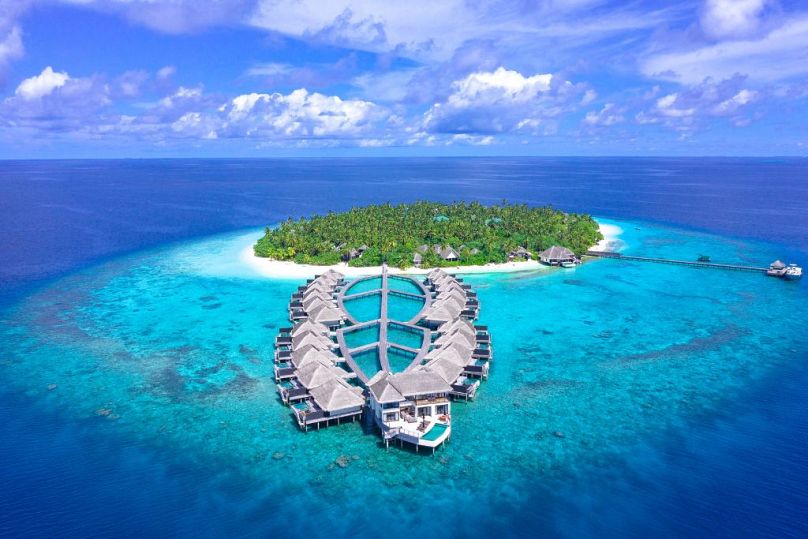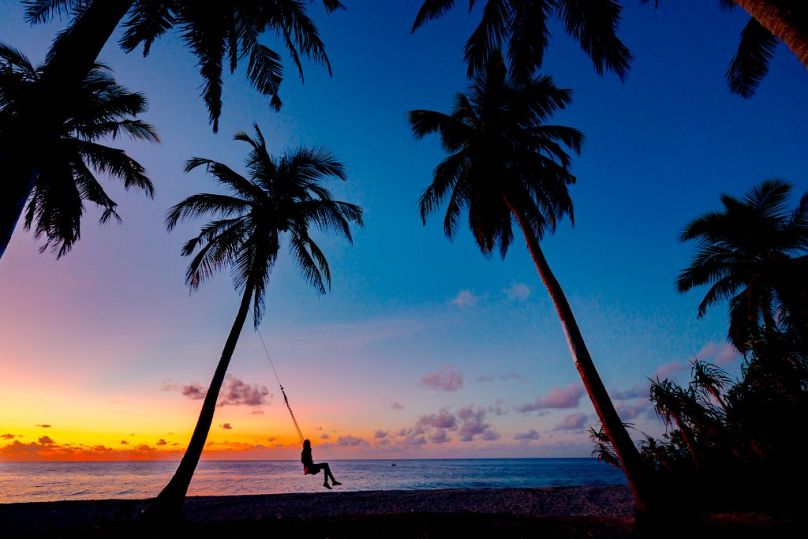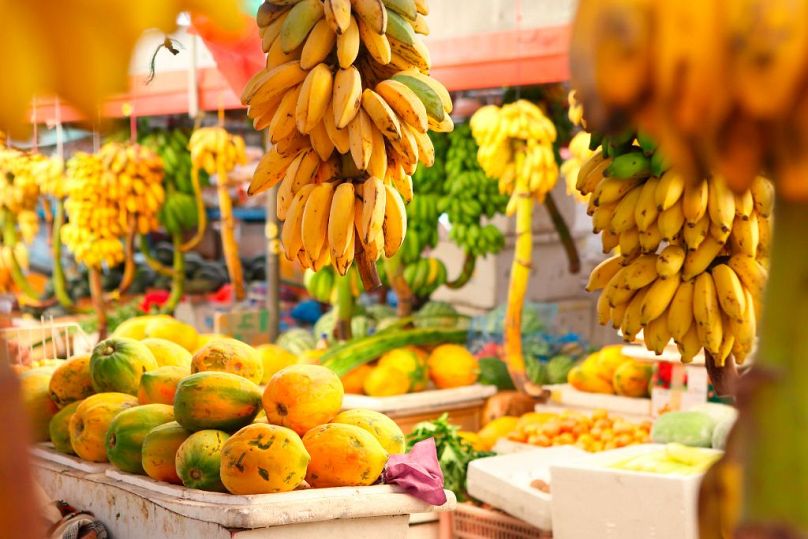Beyond luxurious resorts, there are plenty of opportunities to connect with locals and help keep tourism cash in Maldivian communities.
The Maldives is renowned as a luxurious, fly-and-flop destination. Located 500 km from the southern tip of India and Sri Lanka, it's a serene string of 1,190 low-lying coral islands scattered across the vast expanse of the Indian Ocean. Here, you'll find white, sun-kissed beaches and warm, azure blue lagoons studded with colourful corals that are home to exotic marine life.
This tropical archipelago is also lined with swanky water bungalows and upscale resorts, which have made it synonymous with luxury travel and exclusivity.
It hasn’t always been this way, though. Here’s how to get a taste of Maldivian life beyond the five-star tourist trail.
How the Maldives went from sleepy archipelago to travel hotspot
The Maldives wasn't always a renowned tourism hub awash with opulent resorts. As a remote and largely uninhabited archipelago, it was long considered unsuitable for tourism due to a lack of infrastructure and commercial airports.
This all changed when Kurumba, the first resort in the Maldives, opened in 1972. Kurumba kick-started the tourism industry, which has since seen rapid growth. A swathe of luxurious private holiday resorts now inhabit the islands.
Throughout the 1970s and 1980s, the Maldives experienced steady growth in tourism arrivals as more resorts were established across the archipelago.
These properties, often built on palm-fringed uninhabited islands and owned by foreign investors, offered travellers a secluded and luxurious retreat with overwater bungalows, pristine beaches and world-class amenities.
By the 1990s, tourism had become the backbone of the Maldivian economy, accounting for a significant portion of the country's GDP and providing employment opportunities for thousands of Maldivians.
In the 2000s and beyond, the government continued to invest in tourism infrastructure, including expanding airports, developing new resorts, and promoting the Maldives as a premier destination for luxury travel for high-end tourists.
How is the Maldives pushing sustainable tourism?
The push for rapid tourism development in the Maldives has created several inevitable environmental and social issues for the idyllic archipelago.
A million visitors a year landing on its pristine shores has led to environmental degradation, increased tourism leakage (where foreign investors and multinational corporations control tourism profits), and social change within local communities.
This prompted a call for change in response to mass, resort-based tourism and environmental damage, to protect the island's natural beauty and residents.
The Maldivian government and tourism industry have started to address some of tourism's negative impacts with new regulations and guidelines for sustainable tourism practices and environmental protection measures.
These measures also include promoting local participation in the tourism industry, focusing on sustainability in resorts, and more holistic cultural experiences that connect travellers to local projects and activities.
As a result, travellers looking for affordable and culturally rich experiences in the Maldives can stay on 'local islands' rather than expensive resorts.
Why you should consider visiting a ‘local island’ in the Maldives
In 2009, non-resort islands, known as 'local islands' in the Maldives, were permitted to operate guesthouses and tourist facilities, which increased job prospects for local people and allowed them to benefit financially from the tourism industry.
This led to guest houses, coffee shops and restaurants appearing on local islands, and a cohort of curious travellers headed to them, searching for a more authentic slice of tropical paradise.
Islands like Maafushi, Guraidhoo and Hulhumale also offer a range of guesthouses, restaurants and neighbourhood cafes to enjoy island cuisine at affordable prices.
By staying outside of multinational resorts and eating in locally owned restaurants, the money you spend on your Maldives holiday will likely stay within the community. This community-led tourism approach is becoming popular with more mindful travellers considering their impact on destinations.
"Every year, we see growth in local tourism, and we have seen growth in community tourism," says Sameeu Imad, Vice President of the National Hotels and Guesthouses Association of Maldives.
Imad adds that engaging the communities and "understanding and listening to their cultures" should be a focus of the local tourism experience. He also believes visitors should 'island hop' to meet local people and "hear their stories".
Get a unique insight into Maldivian culture
For visitors looking to embrace this form of community-led tourism, staying in a local and affordable guesthouse gives them a unique insight into Maldivian culture and customs and directly supports local families' livelihoods.
Several guesthouses on 'local islands' are owned and operated by community members who take pride in sharing their heritage and hospitality with visitors.
For travellers wishing to support sustainable tourism practices, community tourism in the Maldives also provides a way to minimise environmental impact while supporting local conservation efforts.
Many community-based initiatives, from marine conservation projects to sustainable agriculture and waste management initiatives, focus on preserving the island's raw beauty and fragile biodiversity.
In addition to staying in local guesthouses, visitors can also book community-based activities and experiences that offer insight into Maldivian culture and traditions and provide locals with additional income.
Connect with locals over food and handicrafts
There are plenty of opportunities to connect with locals and help keep tourism cash in Maldivian communities, including guided tours of fishing villages, visits to local markets, and hands-on workshops in traditional crafts and cooking.
Another highlight of community tourism in the Maldives is the chance to engage with local artisans and entrepreneurs who produce a wide range of traditional handicrafts and handmade products.
From intricate lacquerware and handwoven textiles to locally grown spices and homemade snacks, shopping at local markets and artisanal shops allows travellers to financially support small-scale producers and take home unique souvenirs and gifts.
By fully embracing community tourism in the Maldives, you can experience the islands beyond the confines of luxury resorts and tourist hotspots and contribute to a better future for this fragile, tropical paradise.














